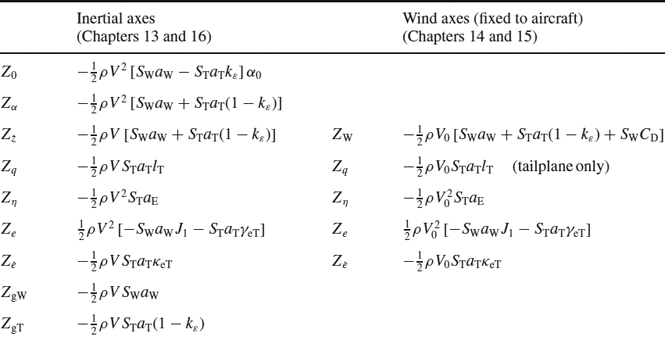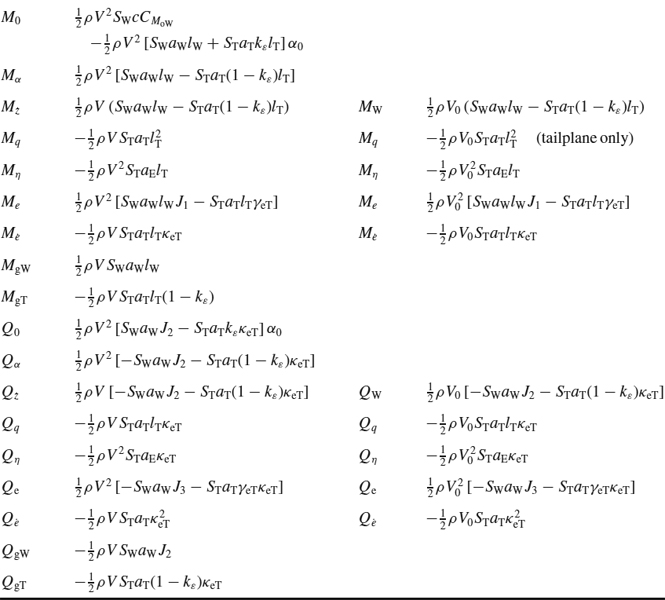B
Table of Longitudinal Aerodynamic Derivatives
In the main text, two different axes types have been considered for manoeuvres and gust encounters, namely inertial axes fixed in space and wind/body axes fixed in the aircraft. Inertial axes are appropriate for flutter, equilibrium manoeuvres, most ground manoeuvres and gust/turbulence encounters, where small excursions in angle and displacement about a datum position are considered. The use of derivatives was primarily to yield a convenient and compact representation of the equations. However, wind/body axes are used for dynamic manoeuvres in flight (and possibly landing) and the aerodynamic stability derivatives are obtained by considering small perturbations.
When longitudinal derivatives are obtained for these two different axes types, differences are present in some derivatives, particularly where perturbations in velocity are considered, but they are relatively small. Flexible derivatives are the same for the two cases when using quasi-steady strip theory aerodynamics. Table B.1 presents the derivatives used in the calculation of symmetric manoeuvre loads; the wind axes results were converted into the present notation from Cook (1997).
Table B.1 Derivatives used in the calculation of symmetric manoeuvre loads


When inertial axes ...
Get Introduction to Aircraft Aeroelasticity and Loads now with the O’Reilly learning platform.
O’Reilly members experience books, live events, courses curated by job role, and more from O’Reilly and nearly 200 top publishers.

